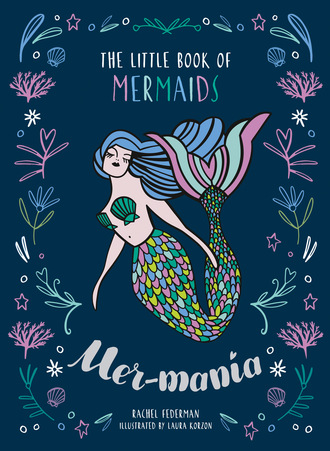
Полная версия
Mermania


Copyright
HarperCollinsPublishers
1 London Bridge Street
London SE1 9GF
www.harpercollins.co.uk
First published by HarperCollinsPublishers in 2019
Copyright © HarperCollinsPublishers
Rachel Federman asserts her moral rights as the author of the text.
Illustrations by Laura Korzon
Cover and interior design by Jacqui Caulton
A catalogue record for this book is available from the British Library
All rights reserved under International and Pan-American Copyright Conventions. By payment of the required fees, you have been granted the nonexclusive, non-transferable right to access and read the text of this e-book on screen. No part of this text may be reproduced, transmitted, downloaded, decompiled, reverse engineered, or stored in or introduced into any information storage retrieval system, in any form or by any means, whether electronic or mechanical, now known or hereinafter invented, without the express written permission of HarperCollins e-books.
Source ISBN 9780008358013
Ebook ISBN 9780008362799
Version 2019-08-20
Dedication

For Wally & Petra –
shapeshifters who always
seem to know who they are

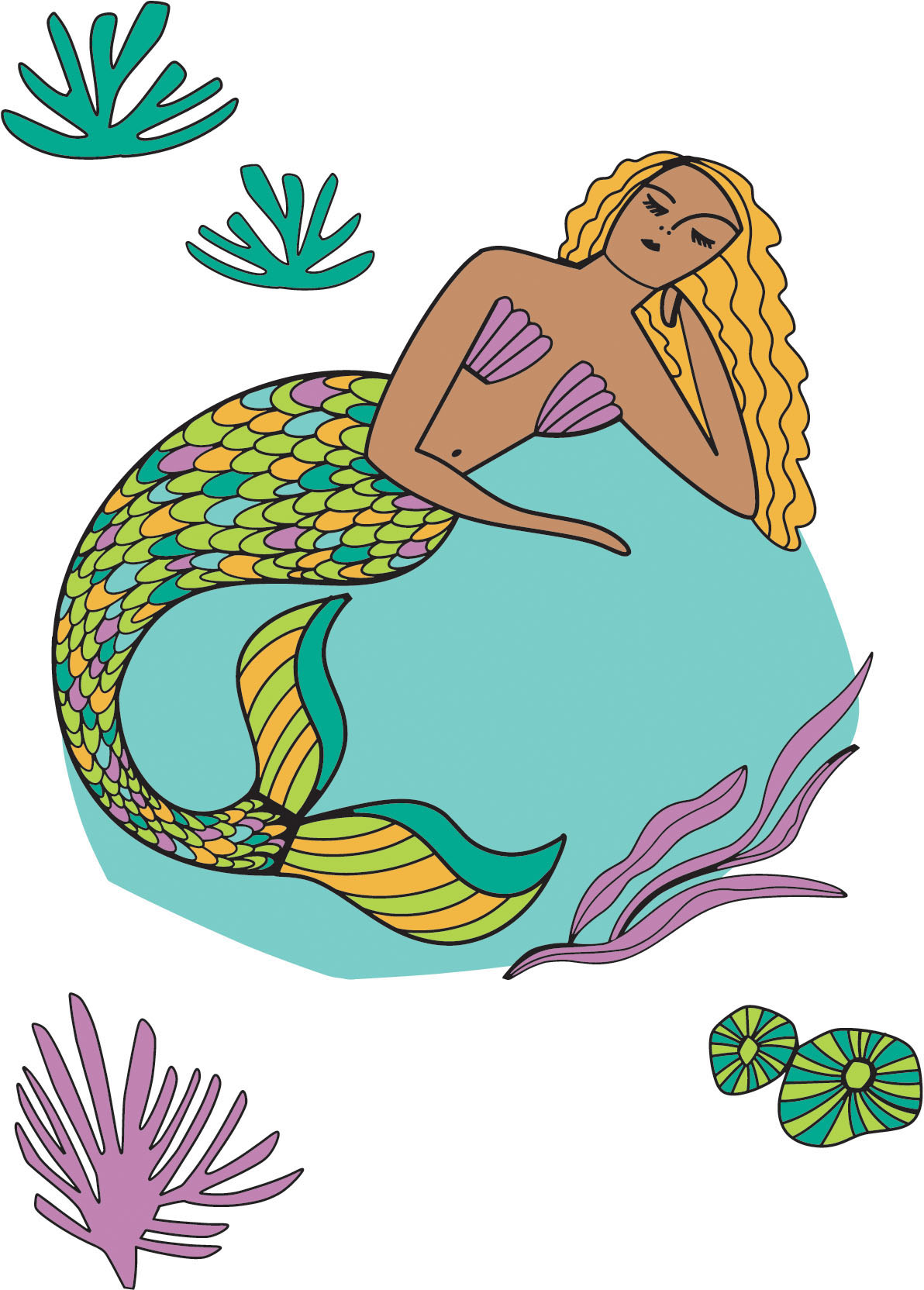
Contents
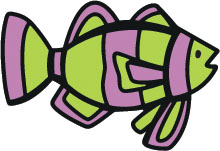
COVER
TITLE PAGE
COPYRIGHT
DEDICATION
INTRODUCTION
HISTORY
MYTHOLOGY
SCIENCE
ART, LITERATURE & POPULAR CULTURE
MERMAID SPELLS
MERMAID-INSPIRED RECIPES
MERMAID CRAFTS & ACTIVITIES
MERMAID INSPIRATION
BIBLIOGRAPHY
ACKNOWLEDGEMENTS
ABOUT THE AUTHOR & ILLUSTRATOR
ABOUT THE PUBLISHER
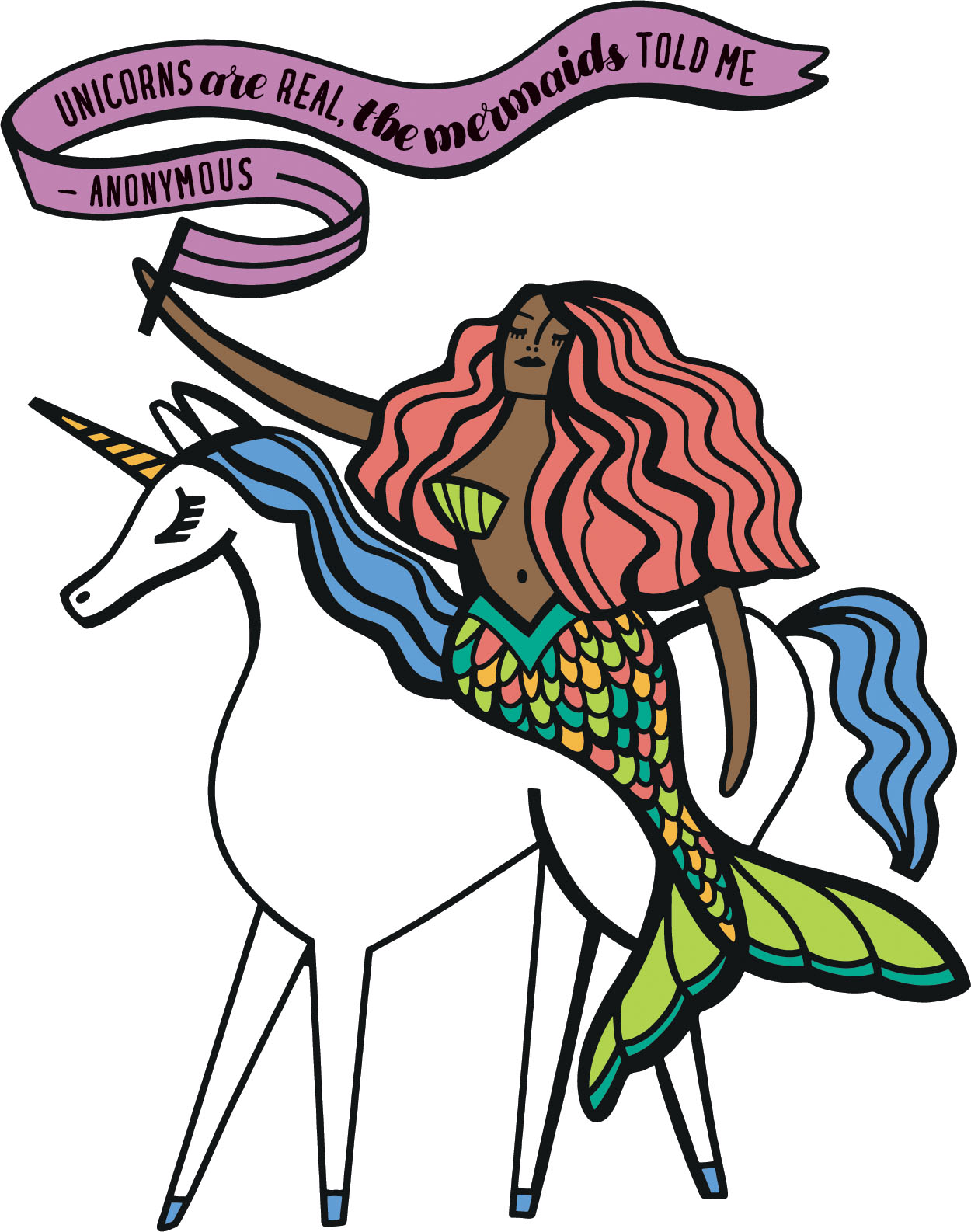
Always follow your
dreams,


unrealistic
others think they are.
Introduction

Mermaids belong to an enchanted realm. Their seascape is at once tantalizingly out of reach – even the greatest underwater diver must eventually come up for air – and achingly familiar, water being our first home.
From the Middle English word mere – meaning lake or sea – mermaids are ‘maids of the sea’, the stuff of legends, but at the same time ever-present in our modern world. From TV series to music videos, from children’s illustrated books to feminist magazines, graffiti, stamps, tattoos, young adult lit, and manga comics, to inspirational postcards and cosy fish-tailed blankets, it seems that wherever you turn, our oceanic alter egos are there. Sprung from ancient fish gods, reborn from the tragedy of forbidden love, combined with the seductive power of the half-bird sirens who sang to Odysseus, and a warning against temptation in the Middle Ages, today mermaids exist as everything from birthday party entertainment to a reclaimed site of political and particularly feminist power.
While we humans dream of being able to breathe underwater – and many a young child longs for the shiny scales of a multi-coloured tail of his or her own – throughout art and story, mermaids are seen yearning for life on land. A 2012 special on the Discovery Channel led viewers to believe that mermaids did in fact exist, a NYC parade near Mermaid Avenue celebrates the dazzling creatures on the Coney Island Boardwalk each year, a bronze statue in Copenhagen has been rebuilt after many attacks by vandals, and from as long ago as the Bronze Age these enchanted creatures have served as our muse.
Surely, part of the mermaid’s appeal is how they dramatize our own dilemma – feeling our animal selves to be immortal, something more than the transient beings that we are. Perhaps these magical sea creatures help us to access a place beyond our material existence. And given that most of the world’s oceans remain unexplored, how can we be sure they don’t really have a material existence themselves?
But perhaps their greatest effect on humans is the way mermaids remake our world. Their desire for a life on land helps us reimagine the one we already have. In their eyes, ordinary elements – air, feet, rain – take on a new hue, becoming extraordinary, even miraculous. Mermaids remind us that the realm to which we belong is enchanted too. Those who love the Earth, with its rising oceans, have increasingly embraced mermaids in their duality – as both harbingers of doom and agents of protection – to swim forward in the fight against climate change.
If mermaids have a legacy that lasts for ages to come, one hopes it will be to help humans preserve the water-filled planet that we’re so lucky to have.
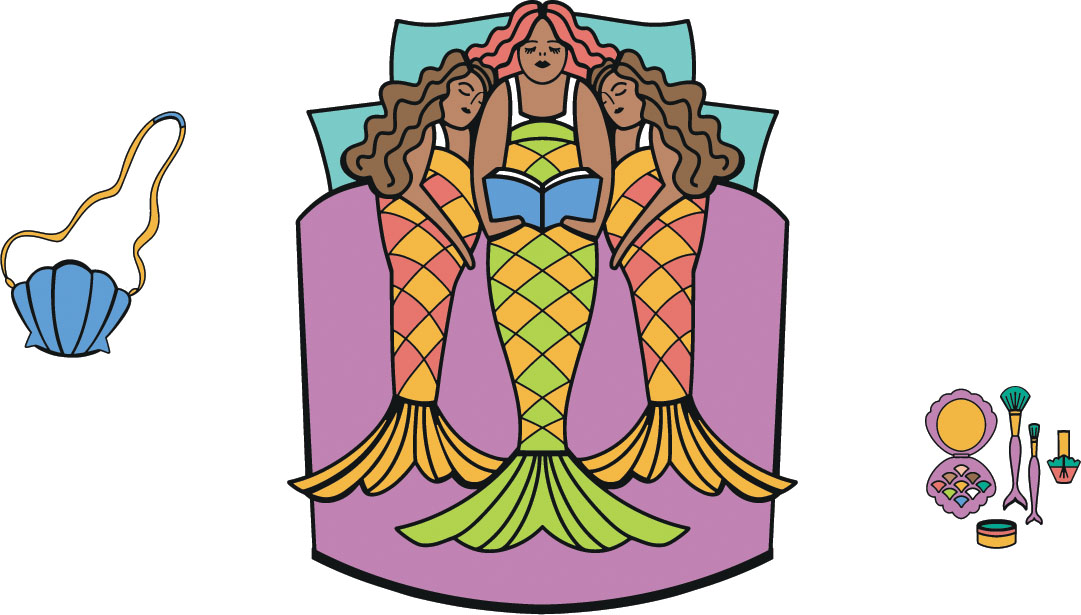
Mermaid Names Around the Seven Seas
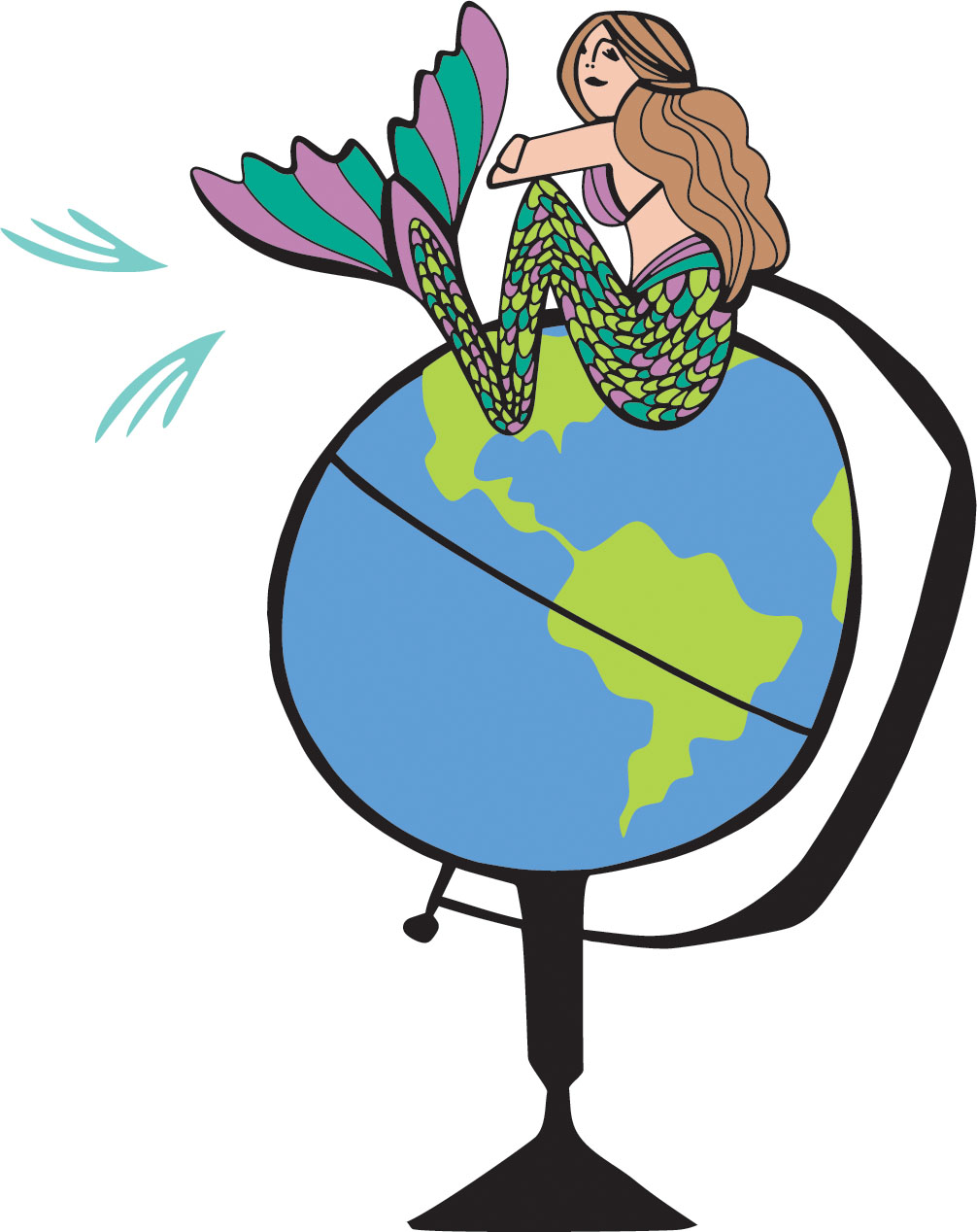
LATVIANARAIRELANDMERROWJAPANマーメイドCARIBBEANAYCAYIABRAZILIARARUSSIA AND UKRAINERUSALKAIRANپری دریاییPOLANDSYRENADENMARKHAVFRUEINUIT MYTHOLOGYᓴᓐᓇFRANCESIRÈNECHINA美人鱼HAITILASIRENESTONIAMERINEITSI

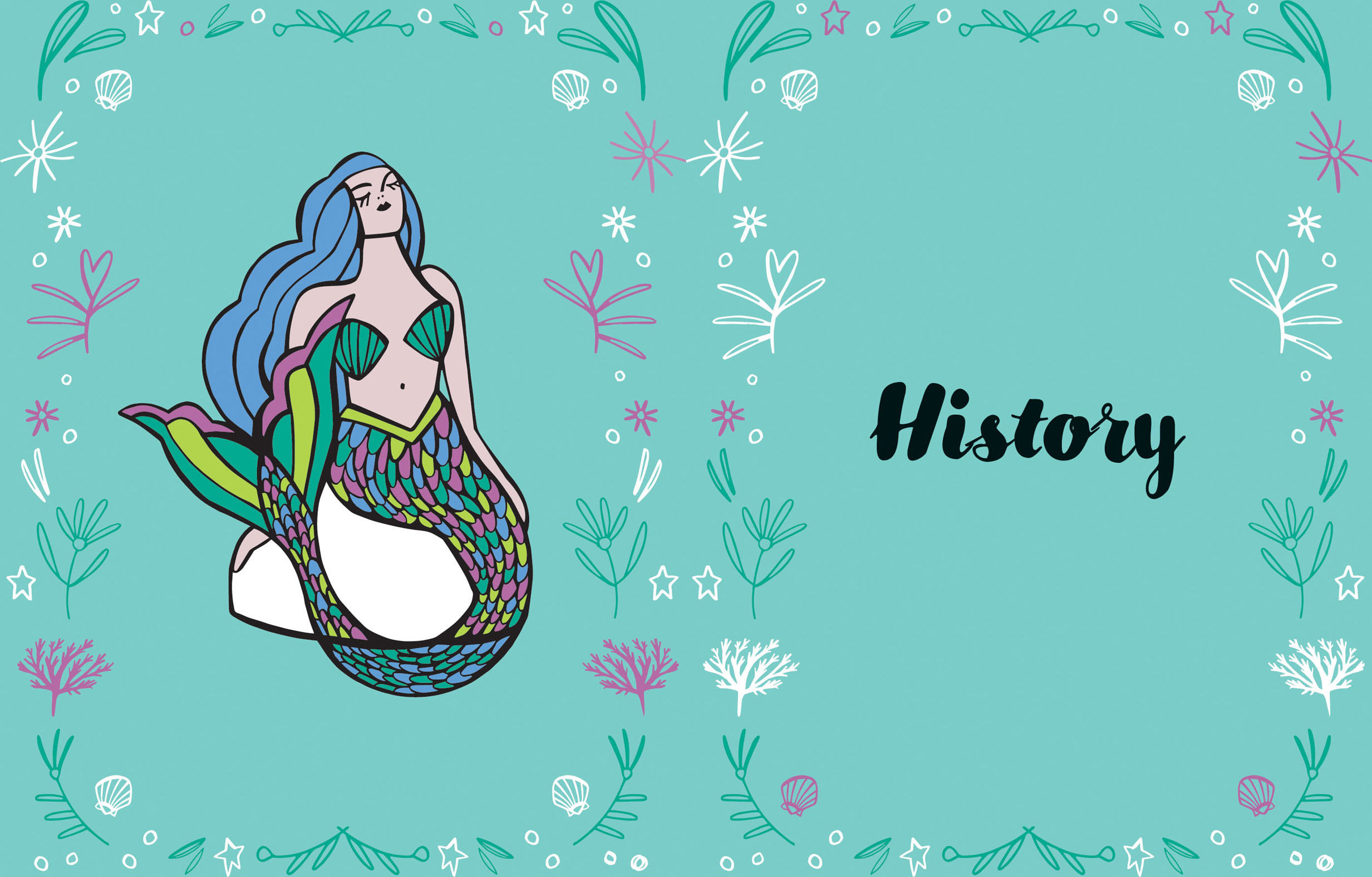
Throughout history,
mermaids
have been known by many names:
AQUATIC HUMANOID
KELPIE
LIMNIAD
NAIAD
NERIAD
NIX
OCEAN NYMPH
OCEANID
SIREN
SPIRIT
SPRITE
SYLPHE
UNDINE
WATER NYMPH

Mermaids have been known to live for up to
three hundred


in their aquatic form.
TRADING FINS FOR LIFE ON LAND TENDS TO SHORTEN THEIR LIFESPAN DRAMATICALLY, PLUS IT OFTEN MEANS
giving up their voices along with their tails.
IN RETURN, THEY’RE GRANTED A TERRESTRIAL ROMANCE, OR
perhaps even a soul.
SADLY, IT’S SAID THAT


don’t have souls;
ONCE THEY DIE THEY SIMPLY
turn into
sea foam.

IN BIBLICAL TERMS (TO MISQUOTE GENESIS),
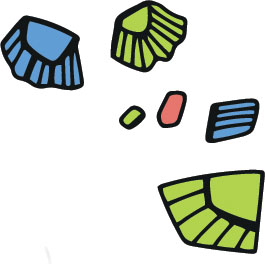
‘For sea foam
thou art, and unto sea foam

In the waters off
THE PORT OF HISTORIC NYHAVN, IN
Copenhagen,
LIES A WELL-LOVED BRONZE STATUE OF
The Little Mermaid,
MADE BY EDVARD ERIKSEN, WHOSE WIFE POSED FOR THE SCULPTURE.

IN 1909 A BREWER NAMED CARL JACOBSEN (THE FOUNDER OF CARLSBERG BEER) COMMISSIONED THE WORK AFTER FALLING UNDER THE SPELL OF A BALLET VERSION OF THE FAMOUS FAIRYTALE. ALTHOUGH MOST GAZE ON
the statue with love
FOR THE QUIET SUNBATHER NEAR THE LANGELINIE PROMENADE, SHE HAS SUFFERED VARIOUS ATTACKS. IN 1964 THE BELOVED STATUE LOST ITS ORIGINAL HEAD. AN AMPUTATION, ATTEMPTED BEHEADING, AND EXPLOSION FOLLOWED. SHE HAS BEEN RESTORED EACH TIME, THOUGH, AND
continues her watch.


Mermaids
CAN SYMBOLIZE ETERNITY, FERTILITY,
beauty, desire, freedom,


Tales about mermaids
began to appear


IN THE MESOPOTAMIAN KINGDOM OF ASSYRIA.
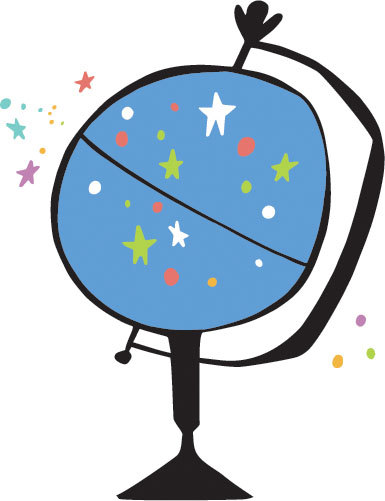
MERMAIDS HAVE BEEN ENCHANTING HUMANS FOR THOUSANDS OF YEARS.
Stories of merfolk
STRETCH BACK THROUGHOUT HISTORY AND ACROSS CULTURES. IN THE
Babylonian period
(1800–600 BCE), EA, THE GOD OF THE SEA (IN GREEK, OANNES), HAD THE
lower body of a fish and the upper body of a human.
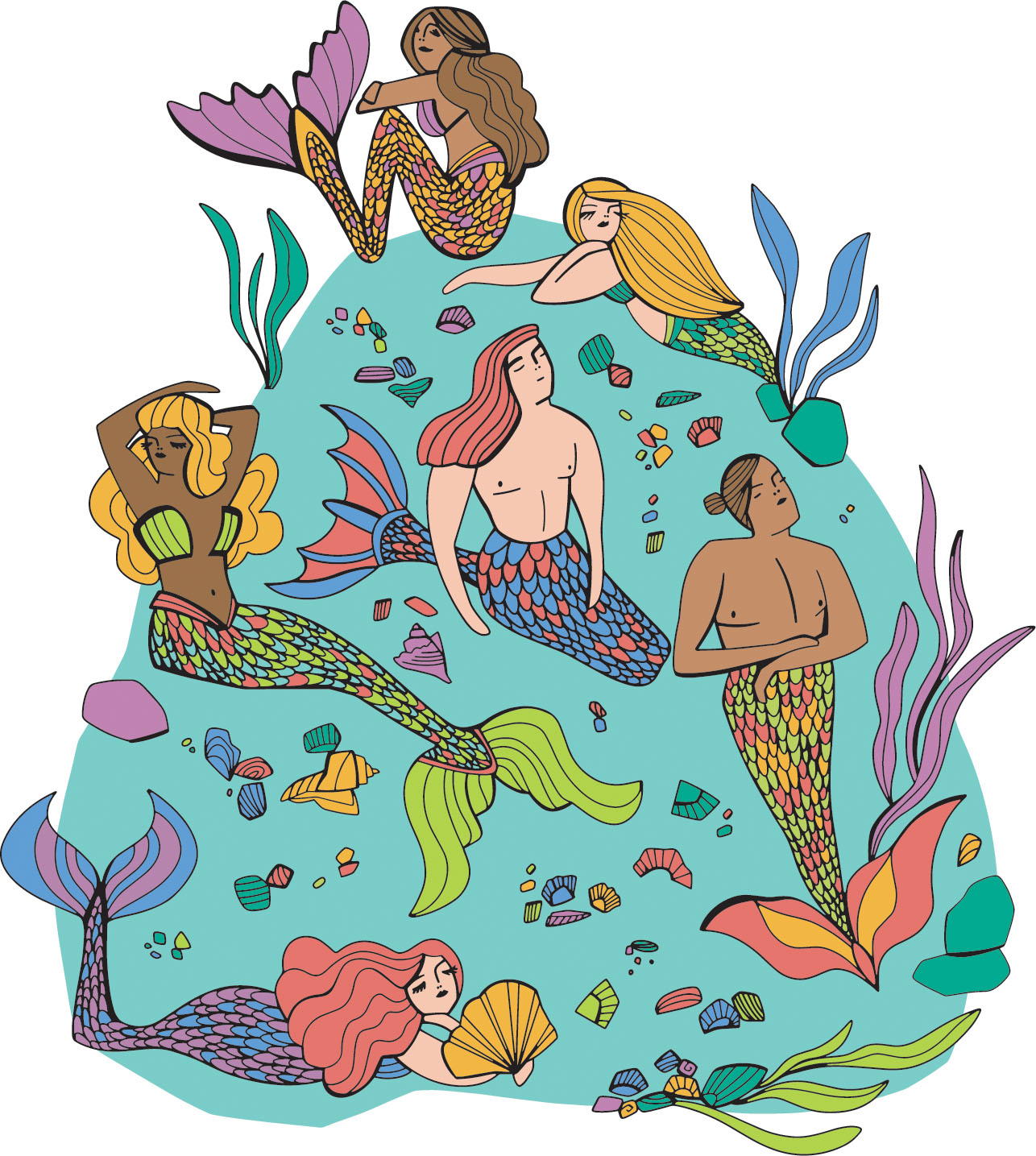

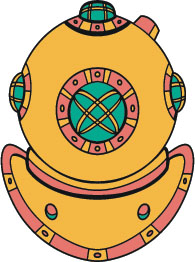
THE CREATOR OF THE
live mermaid show
AT WEEKI WACHEE SPRINGS, FLORIDA, WAS
‘Fish Man’ Newton Perry,
A US NAVY VETERAN WHO HAD ONCE TRAINED NAVY SEALS TO SWIM UNDERWATER IN WORLD WAR 2. ALTHOUGH THE
city of Weeki Wachee
WAS NOT INCORPORATED UNTIL 1966, PERRY OPENED THE THEATRE IN OCTOBER 1947. AS OF 2008, THE LEGENDARY FLORIDA ATTRACTION IS NOW
a state park.
The name
Weeki Wachee
COMES FROM THE SEMINOLE TRIBE OF NATIVE AMERICANS WHO CALLED THE SPRING WEEKIWACHEE
(winding river).


Explorer Christopher Columbus reported seeing
three mermaids
IN THE OCEAN OFF THE COAST OF WHAT IS NOW THE DOMINICAN REPUBLIC, IN JANUARY 1493. HE SAID THEY ‘CAME QUITE HIGH OUT OF THE WATER’ BUT WERE ‘NOT AS PRETTY AS THEY ARE DEPICTED,
for somehow in the face they look like men’.

Moonlight,
CASTING AN ALLURING GLOW ON AQUATIC MAMMALS, MAY HAVE HELPED DECEIVE TIRED SEA TRAVELLERS EAGER FOR A GLIMPSE OF ENCHANTMENT.
MOST REPORTED SIGHTINGS OF

probably mistook manatees, dugongs,

AND THE NOW-EXTINCT SEA COWS FOR THEIR ENCHANTED COUNTERPARTS. AND AT LEAST ONE CREATIVE EXPLORER (WILLIAM SCORESBY IN 1820) SAW
a mermaid figure in a walrus.

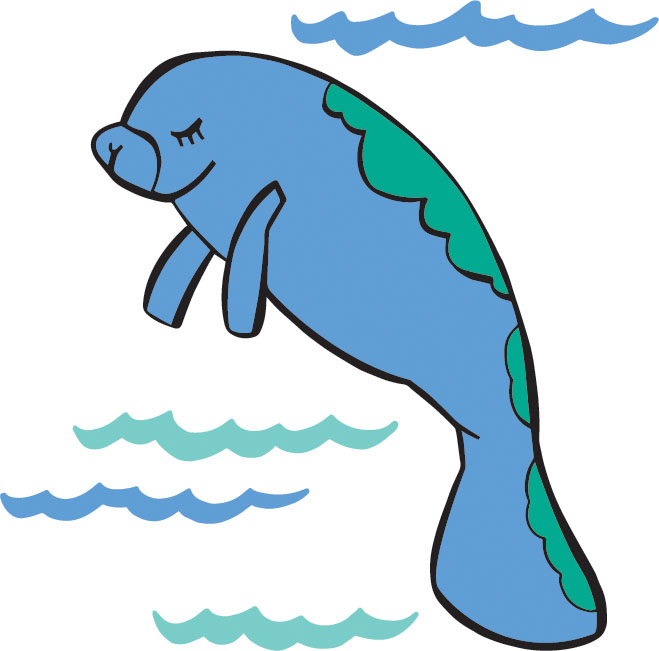
‘Dugong’
COMES FROM A MALAY WORD THAT MEANS
‘lady of the sea’.
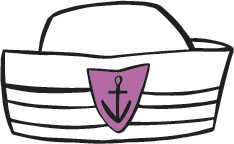
The world’s
biggest mermaid
WAS SAID TO BE 610 METRES (2,000 FEET)
long from head to tail.
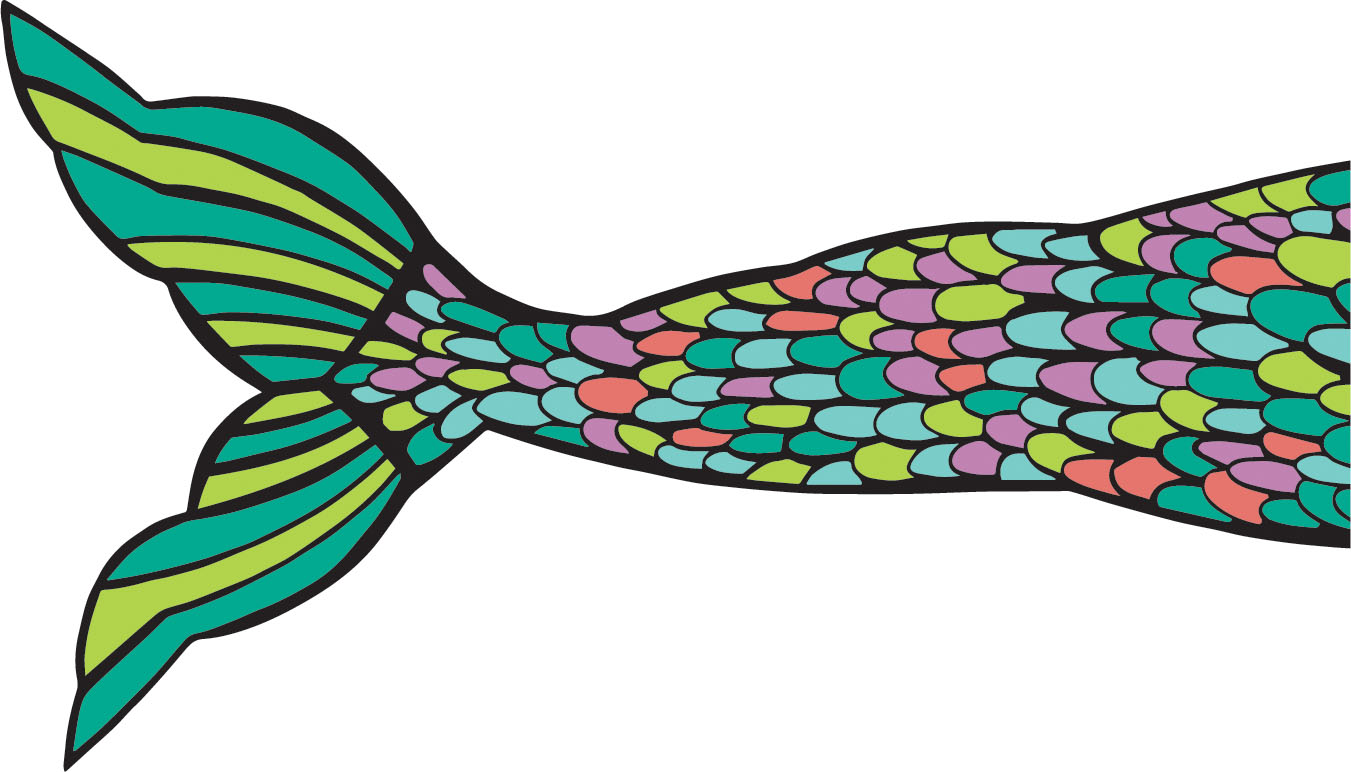
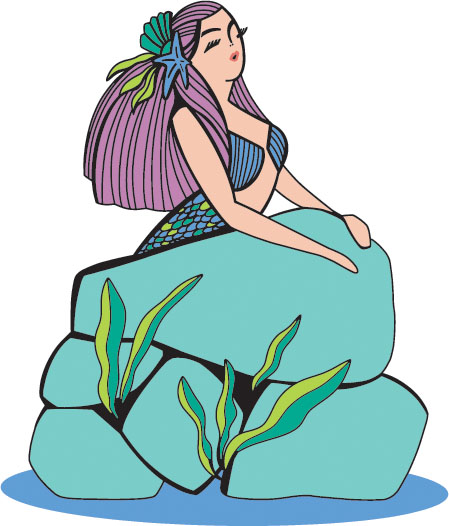
Are mermaids good or bad?
IN SOME STORIES, MERMAIDS APPEAR AS GENTLE, ROMANTIC FIGURES, ABLE TO

AND WARN SAILORS AND FISHERMEN OF IMMINENT DANGER.

IN OTHER TALES, MERMAIDS ARE
dangerous.
THEY LURE SHIPS TO CRASH ON THE ROCKS OR USE THEIR SWEET SINGING VOICES AND RAVISHING LOOKS TO
tempt men into their underwater domain
IN ORDER TO DROWN OR CAPTURE THEM.

IN HIS NATURAL HISTORY, WRITTEN IN THE FIRST CENTURY CE
Pliny the Elder
DOCUMENTED SIGHTINGS OF MERMAIDS
riding upon other marine creatures.
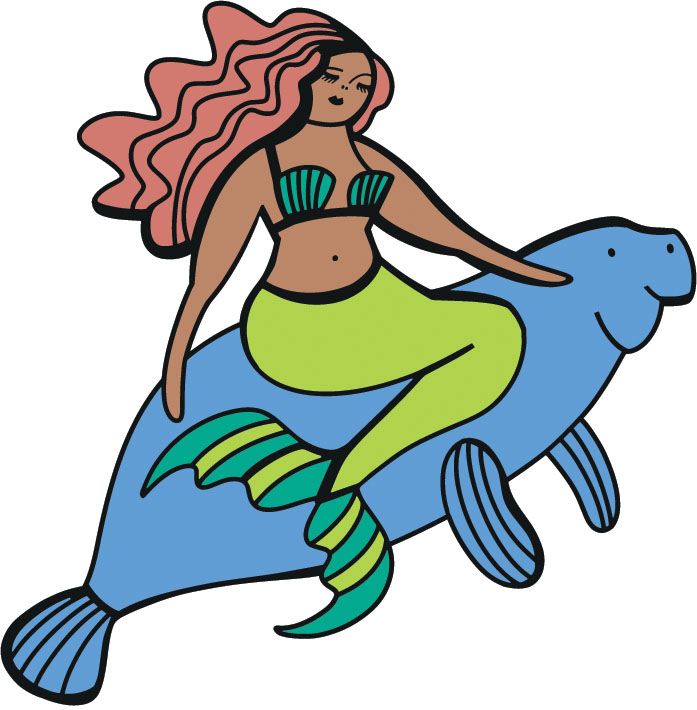
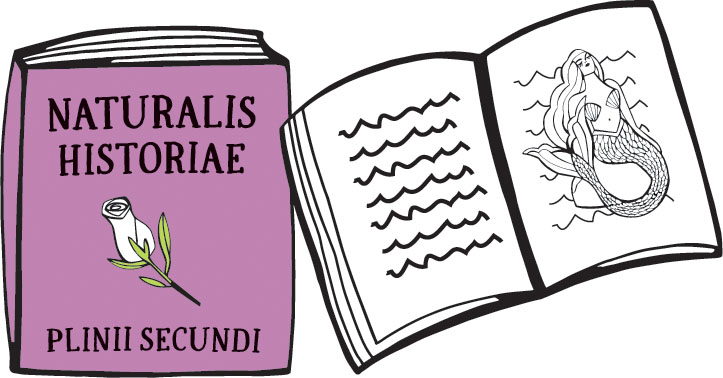
‘AND AS FOR THE MERMAIDS CALLED
Nereides,
IT IS NO FABULOUS TALE THAT GOETH OF THEM: FOR LOOKE HOW PAINTERS DRAW THEM, SO THEY ARE INDEED:
only their body is rough and scaled all over,
EVEN IN THOSE PARTS WHERE THEY RESEMBLE A WOMAN.’
Gliding silently in boats made from sealskin,


MAY HAVE APPEARED TO BE HALF SEA CREATURES.

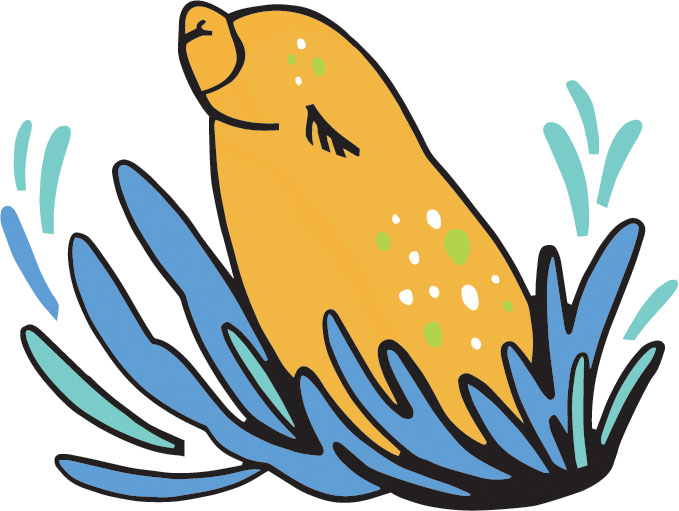
IN HIS NATURAL HISTORY OF AMBOINA (1727),
Dutch naturalist
FRANÇOIS VALENTIJN MENTIONED
the capture of a ‘monster resembling a siren’.

The combs that
mermaids
HOLD ARE MADE OF FISH BONES.

THE TOP HALF OF A MONKEY SEWN ONTO A FISH TAIL WAS A POPULAR FEATURE IN NINETEENTH-CENTURY SIDESHOWS, DUPING AUDIENCES INTO BELIEVING THEY WERE SEEING THE REMAINS OF A
real mermaid.
IN 1842, P.T. BARNUM DISPLAYED ONE SUCH CREATURE – THE SO-CALLED
Fiji mermaid,
WHICH HE CLAIMED TO HAVE BOUGHT FROM A JAPANESE FISHERMAN – AT HIS AMERICAN MUSEUM IN NEW YORK CITY.
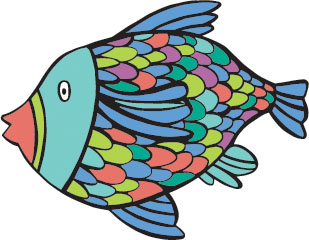

On his second voyage
SEARCHING FOR A NORTHWEST PASSAGE ABOVE RUSSIA, SEVENTEENTH-CENTURY
English explorer
Henry Hudson recorded a mermaid sighting on 15 June 1608.

Here are the notes from his log book:
‘THIS MORNING ONE OF OUR COMPANIE LOOKING OVER BOORD SAW A MERMAID … FROM NAVILL UPWARD, HER BACK AND BREASTS WERE LIKE A WOMAN’S (AS THEY SAY THAT SAW HER) HER BODY AS BIG AS ONE OF US; HER SKIN VERY WHITE; AND LONG HAIRE HANGING DOWN BEHINDE, OF COLOUR BLACKE; IN HER GOING DOWNE THEY SAW HER TAYLE, WHICH WAS LIKE THE TAYLE OF A PORPOSSE AND SPECKLED LIKE A MACRELL.’
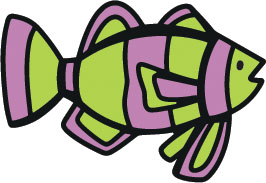
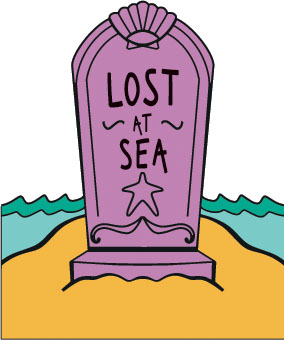
In 1830 a funeral was held to commemorate a


WHOSE DEAD BODY WASHED UP ON THE BEACH AT CULLA BAY ON BENBECULA, ONE OF SCOTLAND’S WESTERN ISLES.
A 1900 account
TRACED HER DEATH TO AN ATTACK AT SGEIR NA DUCHADH A FEW DAYS EARLIER.
It is said her body is buried there near the sea.
LOOK CLOSELY AT THE MAP OF THE
‘New World’
FROM 1562, CALLED THE AMERICAS, OR A NEW AND PRECISE DESCRIPTION OF THE FOURTH PART OF THE WORLD.
two mermaids
CAN BE SEEN, FLOATING CLOSE TO A SHIP NEAR THE TIP OF TODAY’S SOUTH AMERICA.

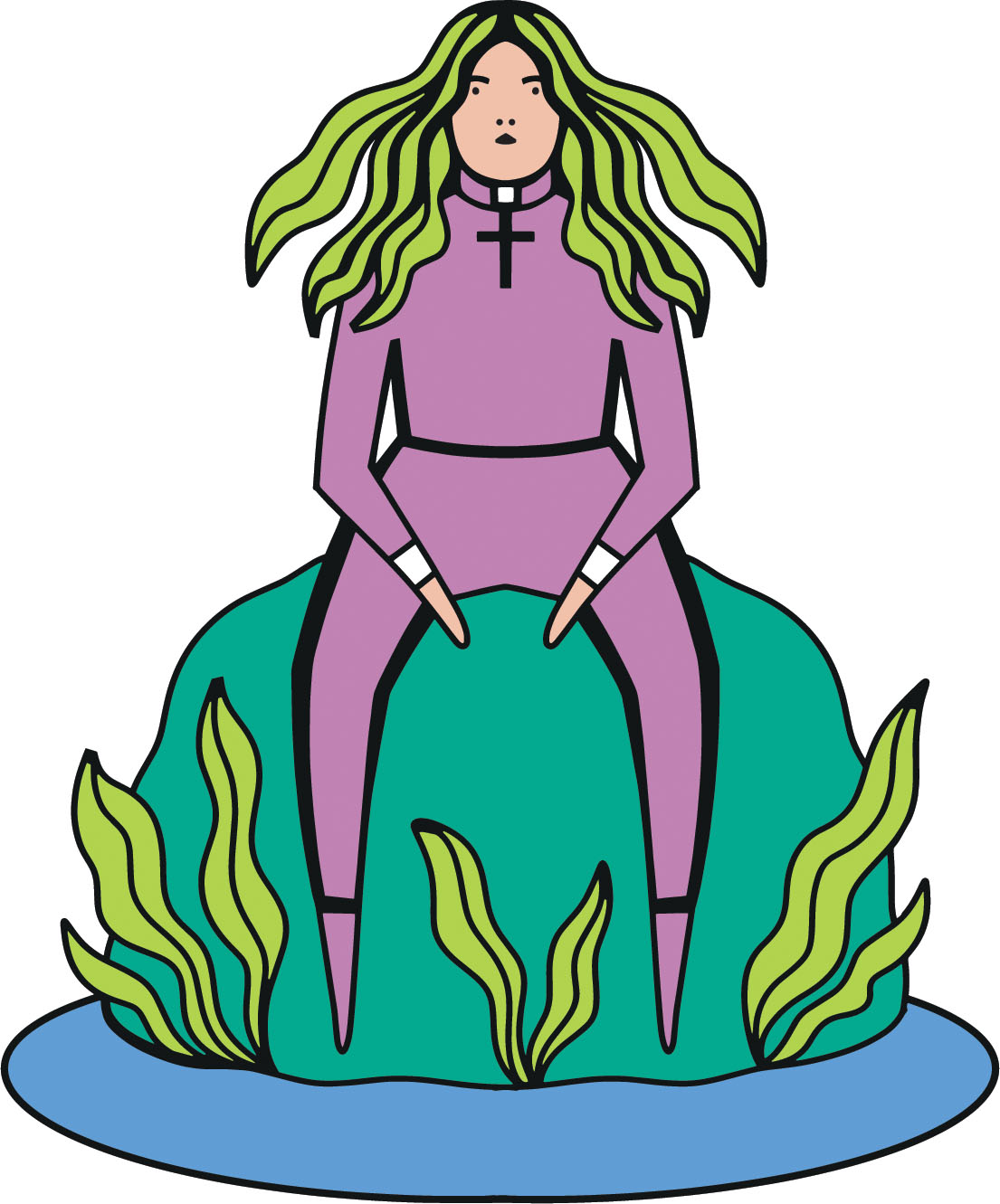
‘THERE ONCE WAS A VICAR IN BUDE, WHO DID SOMETHING UNCOMMONLY RUDE. HE SWAM OUT TO A ROCK, DONNED SEAWEED FOR LOCKS, AND SANG WHILE HE BATHED IN THE NUDE.’
True story.
IN THE EARLY NINETEENTH CENTURY, ROBERT STEPHEN HAWKER OF CORNWALL, ENGLAND, SWAM OUT TO A ROCK, SANG IN IMITATION OF A MERMAID FOR THREE NIGHTS, HIS HEAD DRAPED IN SEAWEED, AND ATTRACTED QUITE A CROWD. AFTER THE THIRD NIGHT HE PLUNGED INTO THE WATER AND WAS NEVER SEEN IN THAT FORM AGAIN.

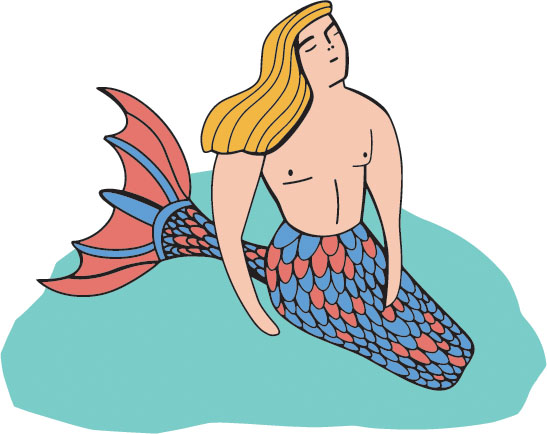
Are there such things as male mermaids?
INDEED – THEY’RE CALLED

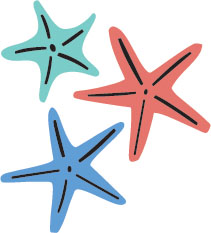
THE GREEK GOD TRITON, FOR EXAMPLE, LOOKS LIKE WHAT YOU MIGHT IMAGINE A MERMAN TO BE. ON THE OTHER HAND, THE MALE MERROW COOMARA (‘SEA-HOUND’) HAS GREEN TEETH AND SCALY LEGS.


Take a look at your cup the next time you’re at Starbucks.
YOU’LL SEE THE WOMAN IN
the logo
is a two-tailed mermaid,
THOUGH THE GRAPHIC HAS CHANGED CONSIDERABLY SINCE 1971 WHEN IT FIRST APPEARED AND SHOWED A LOT MORE SKIN (AND SCALES).
The company’s name came before its logo.
STARBUCKS CAME FROM MR STARBUCK, FIRST MATE OF THE PEQUOD IN HERMAN MELVILLE’S CLASSIC MOBY-DICK.
TO CONTINUE THE MARITIME THEME, ADVERTISING CONSULTANT TERRY HECKLER CREATED THE ICONIC MERMAID
logo we know today.
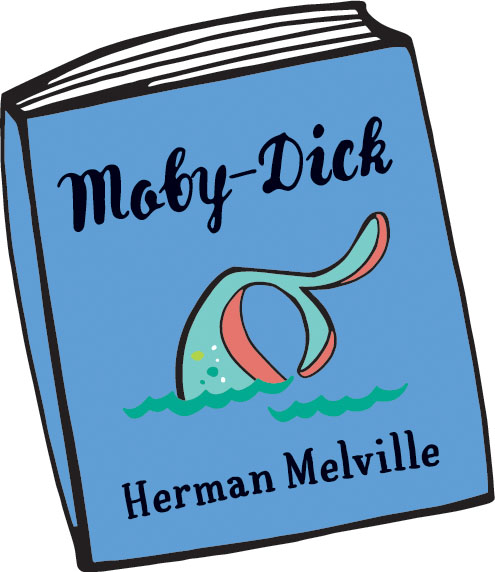

IF TOURING CORNWALL (FOR ITS MERMAID LORE, IF FOR NO OTHER REASON), YOU’LL WANT TO AVOID THE
Doom Bar
WHERE THE RIVER CAMEL MEETS THE SEA. LOCAL LEGEND ATTRIBUTES ITS CREATION TO A MERMAID’S REVENGE FOR HER DEATH AT THE HANDS OF A SAILOR. TRUE OR NOT, MANY A SHIP HAS BEEN DESTROYED ON THIS SANDBANK.
IN JAPANESE FOLKLORE,
eating Ningyo
(mermaids)
IS SAID TO GRANT LONGEVITY.
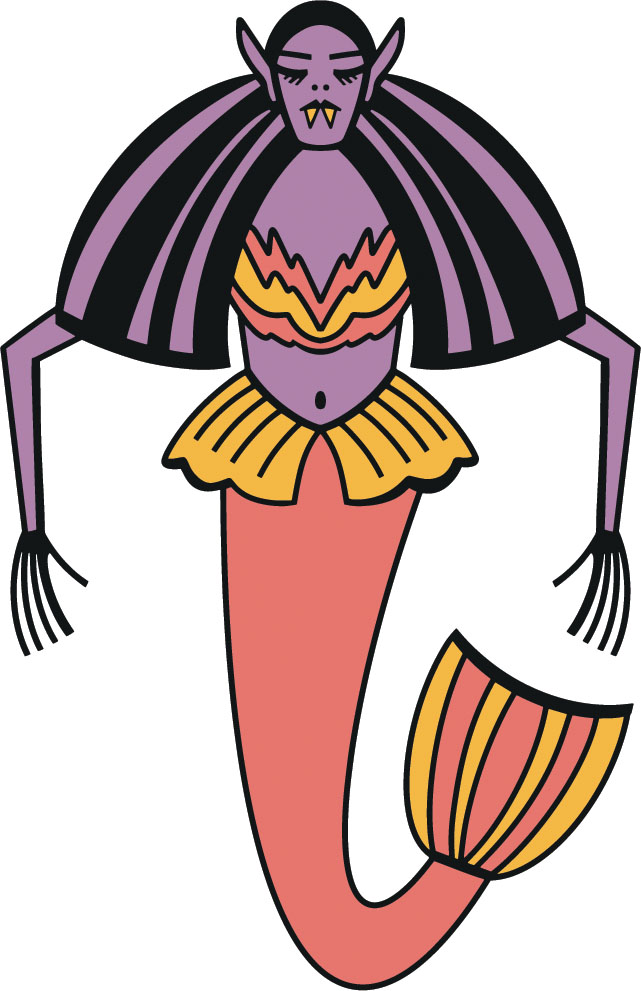

‘The water spirits were known under such names as oreades, nereides, limoniades, naiades, water sprites, sea maids, mermaids, and potamides. Often the water nymphs derived their names from the streams, lakes, or seas in which they dwelt.’
– THE SECRET TEACHINGS OF ALL AGES, MANLY P. HALL (1928)

IN 2009, SEVERAL
independent reports of mermaid sightings
IN THE SMALL TOWN OF KIRYAT YAM, ON THE MEDITERRANEAN COAST OF ISRAEL, LED TO AN OFFER OF








